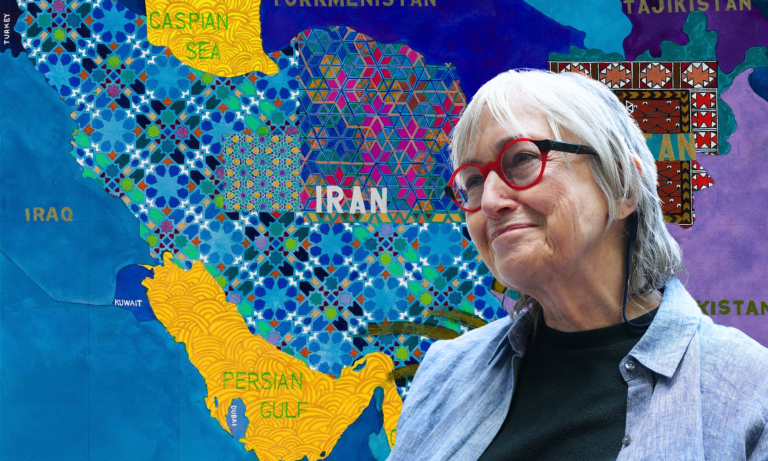In 1973, gallerist Tibor de Nagy called Joyce Kozloff. His voice shook as he told her that Clement Greenberg had just left the back room after a fiery review of her latest work. Greenberg mocked the artist’s Three Facades (1973), which was based on the ornate brick and tile tapestry on the facade of a Mexican church, saying that it “looks… Looks like ladies’ embroidery”—as if that’s a bad thing. Kozlov told us that “Tibor was horrified” and asked her to “take it away.”

Greenberg inadvertently dismissed the artist’s first painting from a major art movement of which she was a key founding member: Pattern and Decoration, also known as “P&D,” which was born in 1970 s flourishing in the era of folk renaissance and feminist protest. Fed up with the hard-edged abstraction and minimalism favored by the white men who dominated the art world, P&D favored lush decorative surfaces, cultural embellishments, and an unapologetic crafty aesthetic.
Of course, it’s critics like Greenberg that P&D takes issue with. Kozlov is quoted twice in a 1978 article “The Concept of Artistic Hysteria in Progress and Culture” co-authored with Valerie Jaudon. Published in Feminist Art Magazine heresy (Kozlov was also a founding member), they wrote that in “rereading the fundamental texts of modern art… we discover a disturbing belief system based on the moral superiority of Western civilization’s art.” They “gradually Realize that prejudices against decoration are old and based on hierarchy: fine art over decorative art, Western art over non-Western art, male art over female art.”

Fortunately, Kozlov’s career doesn’t depend on Clement Greenberg. Over the decades, Kozlov went on to stage dozens of exhibitions, beautify a dozen buildings and transportation systems with public artworks, and inspire a new generation of artists with an unabashed inclination toward decoration. Having been an active member of the peaceful protests of the 1960s, she continues her political activity, which has become even more explicit in her work in the 21st century. Her full-body graphic paintings have been transformed into detailed maps, from Civil War battle plans for virus outbreaks to aviation charts dotted with American bombing sites.

In this episode of the Hyperallergic Podcast, you’ll hear an interview our Editor-in-Chief Hrag Vartanian recorded with Kozloff in 2021, just after the launch of the Hyperallergic Podcast Pleasantly: Pattern and Decoration in American Art 1972-1985 Bard College’s Hessel Museum of Art calls it “North America’s first comprehensive scholarly survey” of the P&D movement. They talked about everything from her mother’s embroidery to her travels in Türkiye and Iran that inspired her art. You will also receive information from allergic Staff writer Maya Pontone reported last year that Kozloff’s iconic public artwork at Cambridge’s Harvard Square train station is now in danger of disappearing. If you listen carefully to this season, you’ll recognize some recurring characters: Columbia University professor Stephen Green; heresy Collective; Joyce’s companion, the writer Max Kozov; and, of course, Clement Greenberg.
The three works in Kozlov’s latest series, barbaric war, boy artand social studieswill be on display through January 25, 2025, in the Map Room of Argosy Bookstore (116 East 59th Street, Upper East Side, Manhattan).
Subscribe to Hyperallergic on Apple Podcasts and wherever else you listen to podcasts. Listen to the conversation and pictures of the artwork on YouTube.

